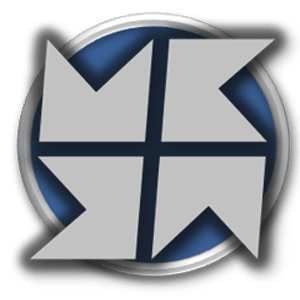Metamation’s PunchCAM module is a powerful and configurable software designed to help make optimal use of your time and machine with intuitive and easy to use features all designed to support your CNC Punch Machines.
Read the FF Journal article on how PunchCAM is helping drive the machines and improvements at B&J
Adaptable Advances
Software keeps workflow moving and operators on the shop floor
A demand from customers to turn jobs around quickly prompted B&J Inc. in Sparks, Nevada, to invest in MetaCAM, the full software suite from Metamation.
“We needed scalable automation for sheet metal punching and processing,” says Alejandro Lopez, manufacturing project manager at B&J. “We needed something that would allow us to select entire tooled assemblies.”
“The [software] has to estimate more for us but also adapt to the changes that would result, like faster processing times,” he continues.
MetaCAM allows B&J to rapidly provide quotes on jobs customers bring in as well as take on more work. “MetaCAM allowed us to make more money and process more sheets while still giving customers a fair price,” Lopez explains.
An automatic estimator cuts down the learning curve, so B&J can hire employees straight out of university instead of fielding applicants possessing years of experience. “The software allows us to find someone more easily since all they have to
do is run the software for a short while before understanding the technology,” Lopez says. “This way we’re able to take someone with less experience into the industry while still achieving accurate quotes based on what’s happening on the shop floor.” Talent shortage Hiring new talent is challenging when located close to competitors in the tech industry. “We’re all hiring from the same pool and it makes it difficult to find someone with 20 years of experience as well as
possess computer skills that allow them to adapt to new technology quickly,” says Lopez. “If we’re able to alleviate much of that using automation software from MetaCAM, we’re able to use that buffer to support an applicant who is smart but
not necessarily familiar with the industry.” B&J made the switch to MetaCAM two years ago to fill the void left by open positions. “Ownership realized they had to do more with less and that spurred their hunt to find software that would enable us to automate,” Lopez says. “We looked at the different CAD packages and realized that Metamation’s solution made it possible for us to do the most with the least amount of workers.”
As a job shop, B&J “doesn’t have the luxury to design 10-step products,” Lopez says. “We have to be flexible and fluid from [applications ranging from] gaming, technology, automotive—it doesn’t matter. We need to be able to get the orders in
and out the door.” B&J works with material that varies from 20 gauge thin material to 1 in. thick. “We try to maximize capacity,” Lopez says. “Our software needs to be as flexible as the orders that come in so we can compete with the other shops in the area. “Compared to two years ago, we’re doing one-third more business with two-thirds of our original staffs. We’re able to control how our machines run and the operator can set up sheets to be crafted exactly as he or she programs it.”
Off and running
After inputting code, an operator confirms what program they’re going to run and CAD drawings show die clamp and tool holders, for example. “The ability to control these features is highly valuable to
someone on the shop floor trying to punch material,” explains Lopez. “No one is making money if the operator is physically walking back and forth to the office to keep track of orders and jobs on the shop floor. An operator makes money by hitting the go/start button. “If it’s a repeatable task, we know we can automate it,” he continues. “And if there is a question I don’t need to send code to India or China to figure it out [because] we have local tech support here.”
Lopez says he’s tweaked code to “trick” the machine into manufacturing what it might not be intended for.
“I can program ‘phantom’ moves and die changes and I can have Metamation help me write a postscript,” Lopez says. “If I’m using an OEM out-of-the-box software, I can’t do that. So I’m no longer limited—Metamation’s tech team is just as willing to try something new as we are.” Punching jobs vary for B&J. “Jobs change day to day,” Lopez says. “One day we might have a fun prototype come through the door while others might be a repeat part we are scheduled to punch out 500 at a time.”
Clear-cut process
Switching to MetaCAM has cut down on the paper trail at B&J. “We have better visibility for jobs on the shop floor and the operator has clear-cut production programs to reference so there is no confusion,”
Lopez says. “It forces him to take ownership and make sure the part is right because if anything is defective, we’ll be able to pinpoint where the error occurred.”
The software makes punching easier and allows B&J to link up to its other machines like laser cutters and press brakes. “We’re not looking to make just our punching process better, we’re looking to improve the entire shop floor flow,” Lopez says. “Whatever process we’re completing must be in line with the rest of the flow of the manufacturing process—MetaCAM helps keep our operators on the shop floor.” Smaller job shops can invest in Metamation software to get more out of their machines and stay competitive, says Anupam Chakraborty, vice president at Metamation Inc. in Rolling Meadows, Illinois.
“With its intuitive user interface, Metamation software makes it painless for individuals to transition into using and extracting performance from the software,” says Chakraborty. “A programmer with limited skill sets can easily comprehend the software and start generating programs to run punch machines.” Punching parts is different from cutting processes. “For laser, plasma or waterjet, it’s a simple process,” explains Chakraborty. “The operator places the material and the software creates a nest, traces the geometry and cuts the part. Anything along the way is adjusted. “But with punching, the tooling is not perfect,” he continues. “It will be very difficult to assign tooling at the next level.” MetaCAM saves operators the trouble of separating tooling for every part across multiple machines. Jobs are saved and available for later reference.
Feedback
Traceability is an added benefit as users can keep track of past orders as well as material handling and inventory. “With machines capable of automatic tool setup, software feedback allows users to adjust how material moves through the shop to better meet the demand for future jobs,” Chakraborty says. Rather than the old method where each part is opened individually and tooled up for each machine, operators can drag and drop in the database. “It’s a one click process to set up a job across multiple machines,” Chakraborty says. Metamation conducts software demonstrations for customers that mimic real-life situations. “On the shop floor, unexpected issues occur,” Chakraborty says. “MetaCAM’s punch module creates a graph of the turret, which can easily be drawn from entry into the current station. “Once the turret is loaded, the job can be nested based on the parts that have been tooled for that particular setup,” he continues. “This is very critical when working with a punch because, if you don’t remember the turret setups, you then have to redo the part for a different setup. That’s a lot of otherwise wasted programming time, saved.” The technical services department at Metamation handles customer issues and training locally either in person or over the web. “An exhaustive training is imparted to all new and upgraded customers,” Chakraborty says. “As a result, customers have the capability to make setting changes to ensure the software works for their particular needs. In case they need help, our team is available to work it through.” Changes in workflow or in the machine can result in different processing outcomes. If a customer adds a new tool like a punch—whether retrofit or a completely new punch machine—such changes can be handled by Metamation’s technical services team. “We have representation in Reno, Nevada; Tennessee and Florida; in Mexico and Canada,”
Chakraborty says.
“Whether it’s a five-piece order requiring us to dial in specific speeds or a 5,000-piece order, we can transition to the punching machine using the software to manipulate whatever processes we need. We know all our Is will be dotted and Ts crossed,” Lopez says.


